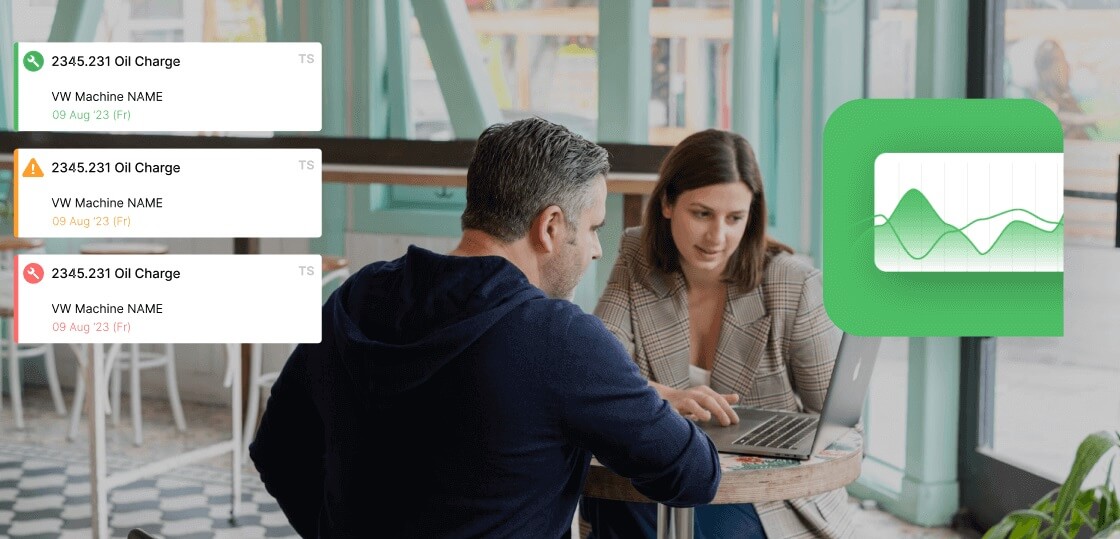When a Plant Manager ("Paula") reviews proposals for new maintenance software, her eyes naturally drift to the bottom line.
Vendor A quotes €40/user.
Vendor B quotes €80/user.
On a spreadsheet, the choice looks obvious. Pick Vendor A, save 50%, and be a hero to the finance department.
This is the single most common mistake in industrial software procurement.
The license fee is just the tip of the iceberg. It typically represents only 20% of the Total Cost of Ownership (TCO) over three years.
The other 80% is hidden below the waterline in implementation fees, consultant hours, separate add-ons, and the "churn cost" of a system that technicians hate.
If you want to make a smart financial decision, you need to calculate the True TCO.
Here is the breakdown of where the money actually goes, and why a unified platform like Fabrico is often the financial winner.
Hidden Cost 1: The "Implementation" Tax
Legacy enterprise systems (like SAP PM, Maximo, or even heavy mid-market tools like Fiix) often require a small army of consultants to set up.
-
The Quote: €50,000/year for software.
-
The Reality: €40,000 for "Professional Services" to map your data, configure the screens, and train your team.
-
The Timeline: 6 to 9 months before you see a single work order. That is 9 months of paying for software you aren't using.
The Fabrico Difference:
Fabrico is built on modern, cloud-native architecture. Because the user interface is intuitive, we don't need to sell you weeks of training. Most customers are live in 2-4 weeks. The "Time-to-Value" is immediate, slashing your Year 1 costs.
Hidden Cost 2: The "Frankenstein" Stack
This is the most common trap for manufacturers. You buy a "cheap" CMMS (like UpKeep) to handle work orders. Then, six months later, you realize you need to track production data.
So you buy a separate OEE tool (like MachineMetrics). Now you have:
-
CMMS Subscription: €10k/year
-
OEE Subscription: €30k/year
-
Integration Tool (Zapier/MuleSoft): €2k/year
-
IT Consultant to connect them: €5k (one-time)
Total Cost: €47,000/year + Setup.
The Fabrico Difference:
Fabrico includes the OEE Module and the CMMS Module in one platform. You pay one subscription. You manage one vendor. You have zero integration costs because the modules talk to each other natively.
Hidden Cost 3: The "Shelfware" Risk (Adoption)
The most expensive software in the world is the one nobody uses.
If you buy a cheap, clunky system, your technicians will continue to use WhatsApp and paper.
-
The Cost: You pay the annual license fee (€15k), but you capture 0% of your failure data.
-
The Result: You cannot prevent the next breakdown because you have no history. The machine fails, costing you €50k in lost production.
The Fabrico Difference:
Fabrico is designed with a "Mobile-First" user experience that mimics consumer apps. Technicians actually use it. This means you capture the data required to prevent that €50k breakdown. High adoption is the ultimate cost saver.
Hidden Cost 4: The ERP Connector
"Paula" needs the maintenance costs to flow into the ERP (SAP, Microsoft Dynamics) for accurate financial reporting.
Many "affordable" CMMS tools charge exorbitant fees for API access or custom connectors. Or worse, they force you to export CSV files manually every week (costing you admin hours).
The Fabrico Difference:
We treat ERP integration as a core requirement, not a luxury add-on. Our architecture is API-first, designed to plug into your financial brain without requiring expensive custom development.
The ROI Calculation: Value vs. Cost
When presenting the budget to the CFO, do not just show the price tag. Show the Net Value.
Scenario:
Because Fabrico impacts Production Output (via OEE), the Return on Investment dwarfs the savings from simple administrative tools.
Summary: Buy Nice or Buy Twice
We see it constantly: A factory buys the cheapest tool, struggles for 18 months, and then scrapes it to buy Fabrico.
That factory paid for two implementations and lost two years of data.
Make the right investment the first time.
[Book a Demo with Fabrico] and let us build a TCO model that proves the value to your finance team.







